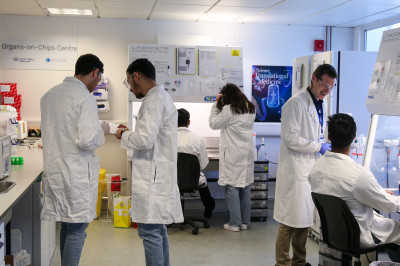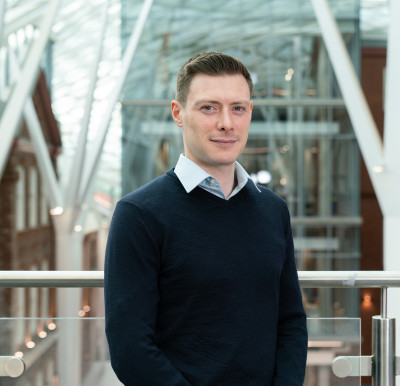News
Researchers make discovery that could prevent the spread of breast and prostate cancer to bones
16 November 2023


Queen Mary researchers have helped to discover a new molecular mechanism in osteocyte cells, that explains how cancer hijacks bone cells in order to grow.
A new paper published in Advanced Science outlines findings by Dr Stefaan Verbruggen, Lecturer in Medical Technology, and his research group.
The interaction between bone cells and cancer cells has previously been poorly understood, so the study aimed to investigate this further. Using cell culture and organ-on-a-chip technology, researchers identified a new mechanism through which cancer cells hijack bone cells and grow rapidly.
The study found that osteocytes, by far the most common bone cell type (making up more than 90% of our bone cells), possess an immune mechanism that they can use to suppress the growth of invading breast or prostate cancer cells. However, a vicious feedback loop is created when cancer cells prevent the bone cells from developing this feature, resulting instead in a promotion of tumour growth.
Survival rates in breast and prostate cancer, the two most common cancers, have increased thanks to improvements in screening and treatment. However, patients can still experience high levels of pain and lower survival chances if the cancers spread into their bones - a common progression.
It is probable that this initial inhibition of the cancer cells by osteocytes could in some part explain why breast and prostate cancers often go dormant, before establishing metastatic colonies in bone tissue.
The discovery of this new molecular mechanism further supports the development of therapies which target and disrupt this cancer pathway. Most notably, the findings reveal two specific new drug targets which could be used to either support the osteocyte suppression of the cancer cells by TNF-α, or prevent the cancer cells from blocking this suppression via TGF-β.
Dr Stefaan Verbruggen said: “Most importantly and unusually, as this mechanism affects both breast and prostate cancer, the number of patients who may benefit is massive.”
Continuing work with the bone metastasis organ-chip model will allow the team to develop a more complex 3D human tumour microenvironment and further investigate and test these newly-identified therapies.
This work was undertaken as part of Stefaan Verbruggen's Marie Curie Fellowship, and a collaboration between Professor Martin Knight at Queen Mary University of London and Professor Chris Jacobs at Columbia University, who sadly passed away from cancer before the study was completed. The paper contains a dedication to his memory.
This work has been funded by the following research grants: European Union’s Horizon 2020 research and innovation programme under the Marie Skłodowska-Curie grant agreement No. 748305 (SWV) and Engineering and Physical Sciences Research Council - Cancer Research UK (EPSRC-CRUK) Multidisciplinary Award. Additional support was provided via the Queen Mary+Emulate Organs-on-Chips Centre. The work forms part of the research portfolio of the National Institute for Health Research Barts Biomedical Research Centre (NIHR203330).
| Contact: | Ayden Wilkes |
| Email: | a.wilkes@qmul.ac.uk |
| People: | Stefaan VERBRUGGEN Martin KNIGHT |
| Research Centre: | Bioengineering |
Updated by: Ayden Wilkes




